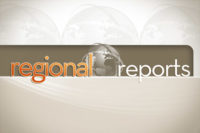WASHINGTON — The Equipment Leasing and Finance Association (ELFA) reminds small businesses of five key factors to consider when acquiring equipment. Most small businesses need equipment in order to operate and grow, and each business must decide on an acquisition strategy that is right for them. A majority of businesses turn to equipment leasing and financing so they can take advantage of a range of benefits.
“Equipment leasing and financing help all types and sizes of commercial businesses to acquire the equipment they need to conduct their business operations,” said William G. Sutton, CAE, ELFA president and CEO. “For small businesses in particular, which may not have access to many funding options, equipment financing offers flexible, budget-friendly options that can help with cash flow and keep their equipment up to date.”
ELFA highlights five key benefits that make equipment finance an advantageous option for small businesses:
1. Get 100 percent financing with no down payment — Unlike with most traditional lenders, it is possible to arrange 100 percent financing of equipment with no down payment. This is a critical benefit, since cash flow is often a concern for small and new businesses. This allows the business to hold on to cash, or working capital, and use it for other areas of the business, such as expansion, improvements, or marketing.
2. Eliminate the risk of ownership — A business just starting out can use equipment financing to help lessen the uncertainty of investing in a capital asset until it achieves a desired return, increases efficiency, saves costs, or meets other business objectives.
3. Keep up-to-date with new technology — To be on the cutting edge and be competitive, businesses often need access to new technology. Leasing, loans, and other financing can enable small businesses to acquire more and better equipment than they could have without financing. In addition, businesses that use lease financing can avoid the risk of owning obsolete equipment, since many agreements allow for easy and fast equipment updates.
4. Plan expenses for cash flow and business cycle fluctuations — Financing equipment allows for greater certainty in budgeting by setting customized rent payments to match cash flow and even seasonal cash flows.
5. Obtain the convenience of product and service bundling — Certain financial products allow businesses to finance the entire cost of equipment, including installation, up-front maintenance, training, and software charges, thereby packaging systems and ancillary products and services into a single solution. This makes the equipment acquisition easy to manage and frees up the business to focus on its core operations.
For more information about how equipment finance can help equip small business for success, visit www.equipmentfinanceadvantage.org. This site includes a digital toolkit, articles, informational videos, definitions of the various types of financing, a lease vs. loan comparison, and questions to ask when financing equipment.
Publication date: 12/7/2015
Want more HVAC industry news and information? Join The NEWS on Facebook, Twitter, and LinkedIn today!










